EDITOR’S NOTE: This article was verified by Arturo Feliz-Camilo, the Dominican food blogger behind Dominican Heat. Check out his Instagram account and website for authentic Dominican recipes.
The Dominican Republic is the most visited country in the Caribbean. It’s an idyllic island destination famous for its white sand beaches, turquoise waters, and beautiful resorts. With so much going for it, there are plenty of reasons to visit the Dominican Republic, one of the most enticing being its colorful and comforting cuisine.
Traditional Dominican cuisine is a reflection of its history and multicultural makeup. If you have a curiosity for local food, then you may want to try these 15 Dominican dishes on your next trip to the Caribbean.
Save This on Pinterest!
No time to read this guide on traditional Dominican dishes? Click on the save button and pin it for later!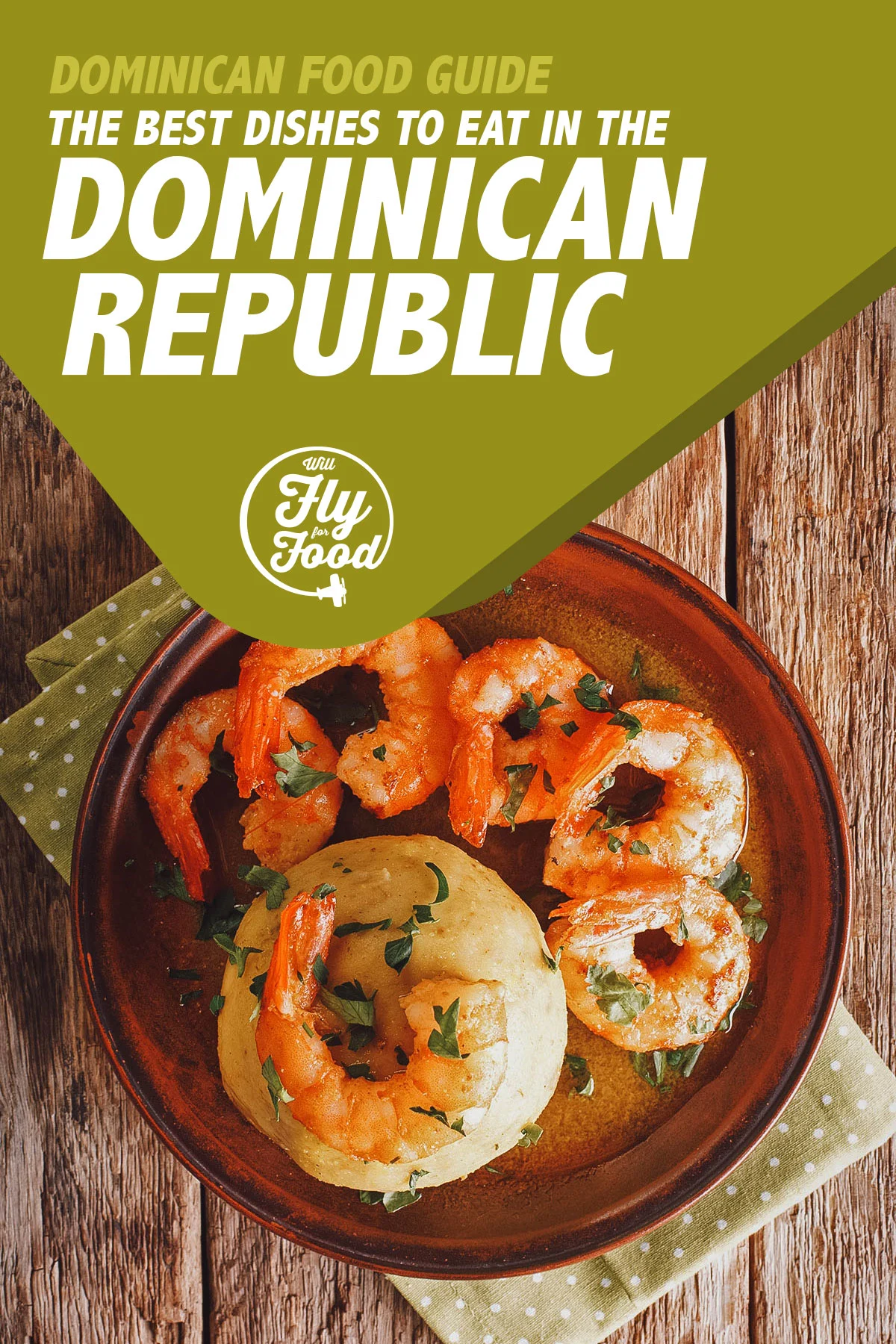
Photo by lenyvavsha
WHAT IS TRADITIONAL DOMINICAN FOOD?
Because of its colonial history and waves of immigration, over 70% of the Dominican Republic’s population is made up of mixed ethnicities (as of 2014). This same multi-ethnic composition can be seen in Dominican cuisine which is largely a combination of Spanish, indigenous Taíno, African, and Middle Eastern influences.
Like many Latin American countries, white rice, beans, and plantains are staple foods in the Dominican Republic. Pork is the preferred type of meat though chicken is by far the most consumed. Goat and beef are common as well.
Being an island nation, seafood is also common in the Dominican Republic though it’s usually reserved for the country’s middle- and upper-classes. Poorer Dominicans make do with lesser quality fish which they often stew with la criolla, a type of rice.
Dominican breakfast typically consists of mangú (plantains), eggs, meat, and viveres (tubers and starchy roots). Like Spain, lunch is the heaviest meal of the day in the Dominican Republic. The typical Dominican lunch will consist of arroz blanco (white rice), beans, and meat served together in a dish called la bandera.
Thanks to their similar histories, Dominican cuisine shares many similarities with the cuisines of its Latin American neighbors, most notably with Puerto Rico and Cuba. Many ingredients are the same but preparations and names of dishes may vary.
WHAT TO EAT IN THE DOMINICAN REPUBLIC
Traveleaters looking for the best traditional Dominican foods will have these 15 mouthwatering dishes to look forward to when they visit the Dominican Republic.
1. Mangú
Mangú is a popular dish of mashed plantains. It’s one of the most representative dishes of Dominican cuisine and regarded by many as the Dominican Republic’s official breakfast dish.
To make mangú, boiled plantains are mashed to a smooth texture with butter or oil and the water in which they were boiled. They’re then topped with red onions sauteed in vinegar and served with side dishes like queso frito (fried cheese), fried eggs, or slices of fried Dominican salami. When served with all three, it’s referred to as los tres golpes (“the three strikes”) – ie mangu with cheese, eggs, and salami.
Like many Dominican dishes, mangú is believed to be a product of African influences. It was brought to the Dominican Republic during the slave trade and is said to be derived from “mangusi”, a Congolese term used to describe any root vegetable that’s boiled and mashed.
RECIPE: Mangu
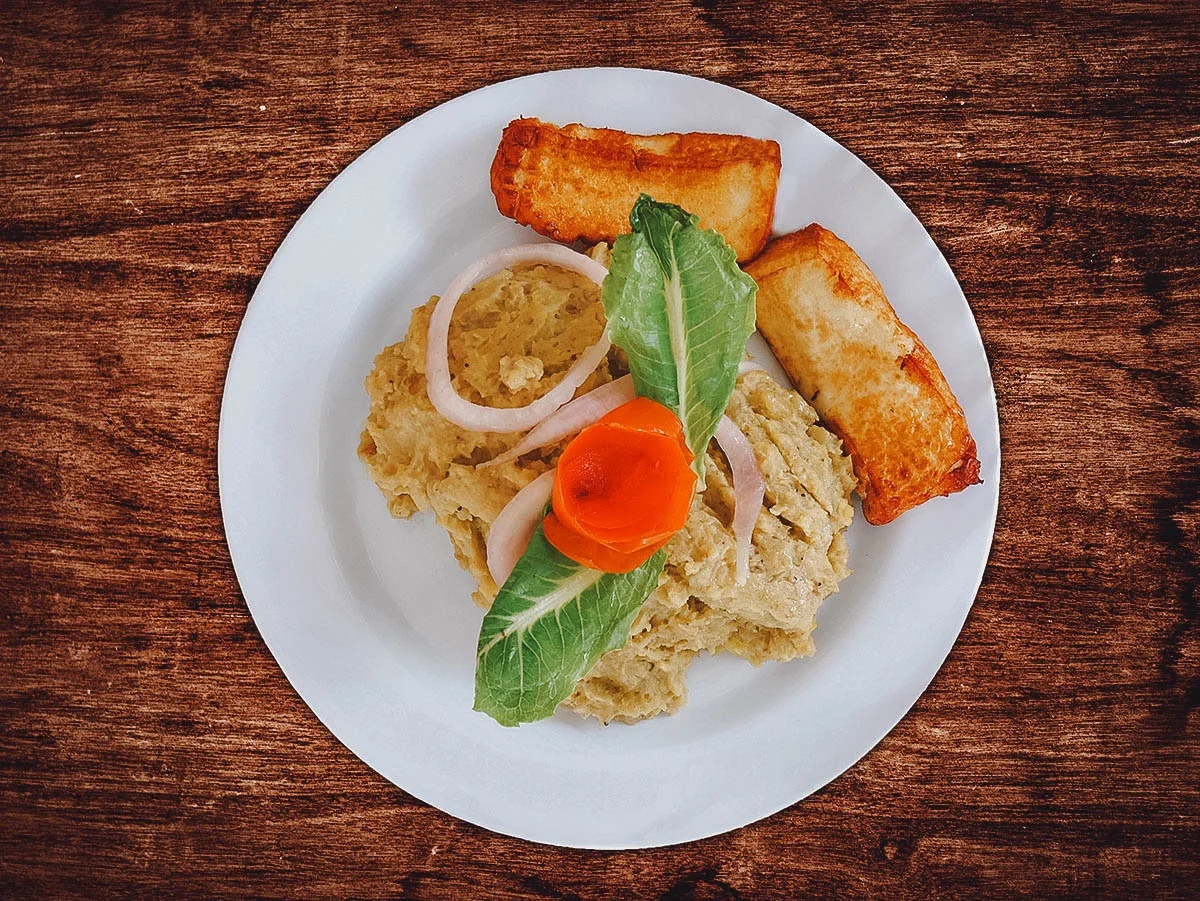
Photo by [email protected]
2. Mofongo
Like mangú, mofongo is a popular Dominican dish made from mashed plantains, but instead of being boiled, the plantains are fried or roasted before being mashed with garlic, salt, oil, and chicharron. The mash is then shaped into a ball and served with meat or seafood and a chicken or meat broth. It’s commonly eaten for lunch or dinner, or as a late-night after-drinking snack.
As popular as mofongo is in the Dominican Republic, it’s equally popular in Puerto Rico. Both island nations claim to have invented the dish though evidence seems to indicate that the most popular type of mofongo consumed in the Dominican Republic may indeed be Puerto Rican in origin. Traditional Dominican mofongo was made from roasted plantains, not fried plantains the way it is in Puerto Rico.
Regardless of who invented it, mofongo is most certainly derived from African fufu, a type of “swallow food” (food that’s meant to be swallowed, not chewed) made from starchy vegetables like yam, cassava, and plantains. Like mangú, it was brought to the Dominican Republic during the slave trade.
Classic versions of mofongo are made with chicharron but other varieties exist that can be made with different types of meat and seafood like chicken, bacon, shrimp, or beef. They can be incorporated into the mash or served on the side with a broth that’s meant to moisten the mofongo and bring out its flavor.
RECIPE: Mofongo
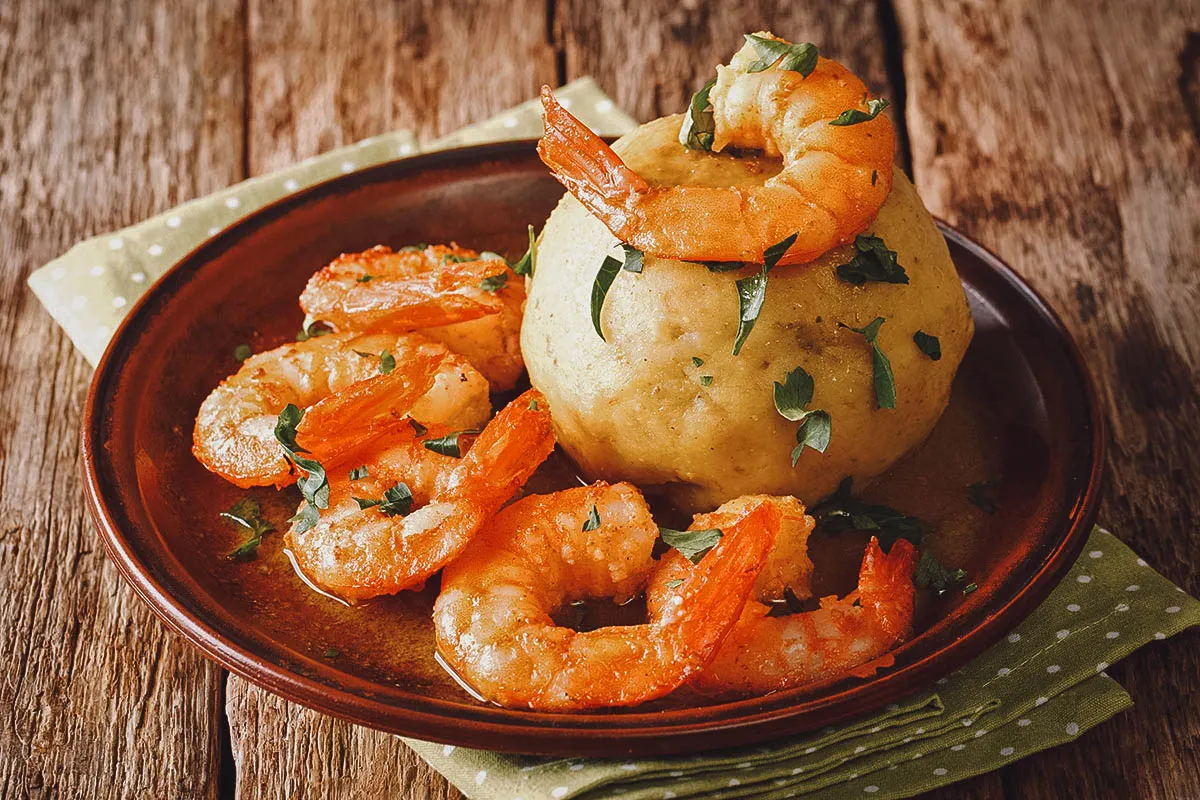
Photo by lenyvavsha
3. Tostones
Tostones refer to slices of twice-fried plantains. It’s a popular dish that’s consumed in many Caribbean and Latin American countries like Puerto Rico, Cuba, Venezuela, Ecuador, and Peru. Depending on where they’re from, they can go by different names like patacones, tachinos, bannann peze, or fritos verdes.
Tostones are made with unripe plantains that are fried, flattened, and then fried again. They’re widely consumed in the Dominican Republic, either as a side dish, appetizer, or street food snack. They’re so popular that they’re often the first dish Dominican cooks learn how to make.
RECIPE: Tostones
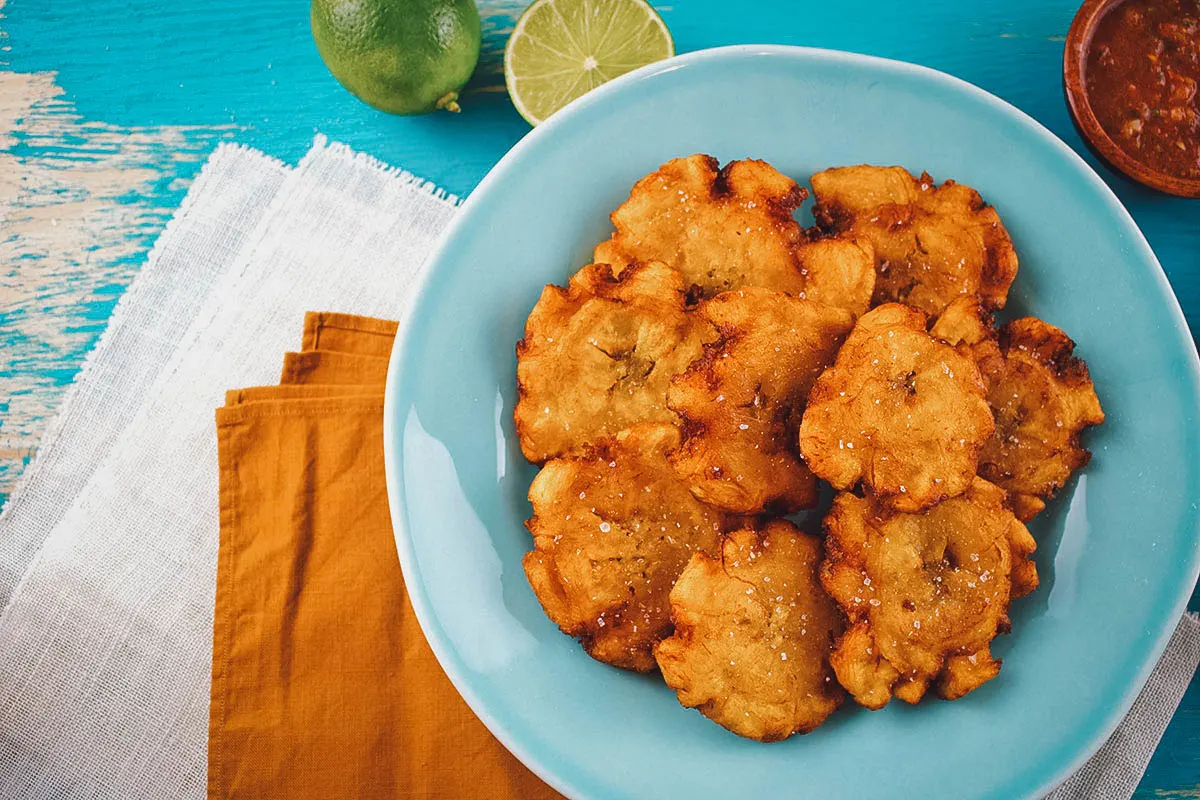
Photo by altagraciaart
4. Pastelitos
Like tostones, the pastelito is a hugely popular Dominican dish that’s widely consumed in the Caribbean and the rest of Latin America. It’s basically a round version of the empanada, a half-moon-shaped pastry turnover usually made with a meat filling.
Traditional Dominican pastelitos are deep-fried but they can be baked as well. Like empanadas, they can be filled with any number of ingredients like chicken, beef, pork, vegetables, and cheese. They can even be filled with fruits or jams and eaten for dessert.
RECIPE: Pastelitos
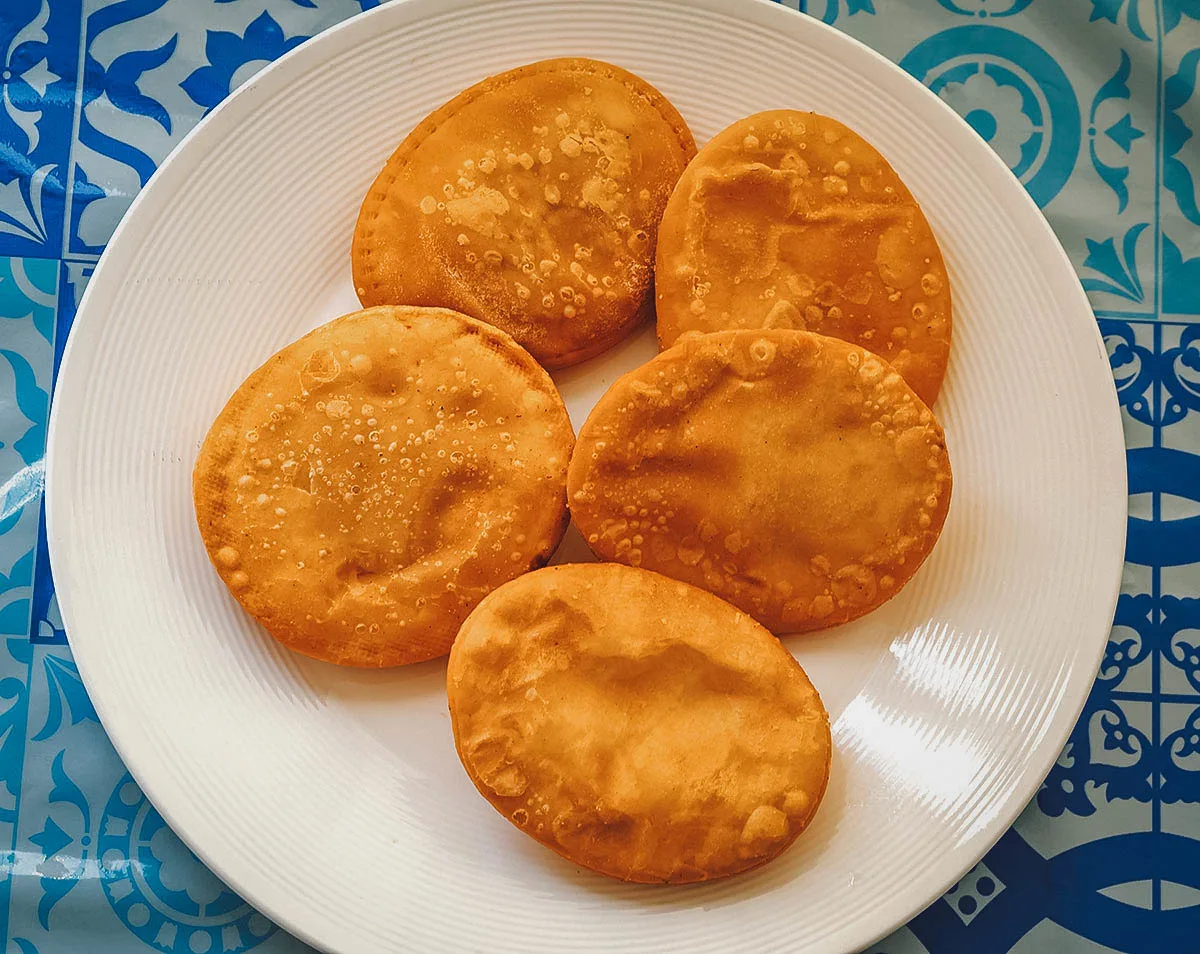
Photo by mariodmf
5. Kipes
The kipe (or quipe) is the Dominican version of the Lebanese kibbeh, a type of football-shaped croquette made with spiced ground meat, onions, and bulgur. They were brought to the Dominican Republic by Middle Eastern immigrants who arrived in the Caribbean at the end of the 19th century.
Unlike traditional Middle Eastern kibbeh that’s typically made with lamb, Dominican kipe is made with beef. It’s also much more restrained in its use of spices, leaving out many of the spices and herbs like cumin, mint, and pine nuts that are common in Lebanese kibbeh.
Dominican kipe is typically made with bulgur, ground beef, finely diced onions and bell peppers, chopped basil leaves, tomato sauce, and raisins. It’s a popular and often indispensable component of many Dominican picadera (party food) platters.
RECIPE: Kipes
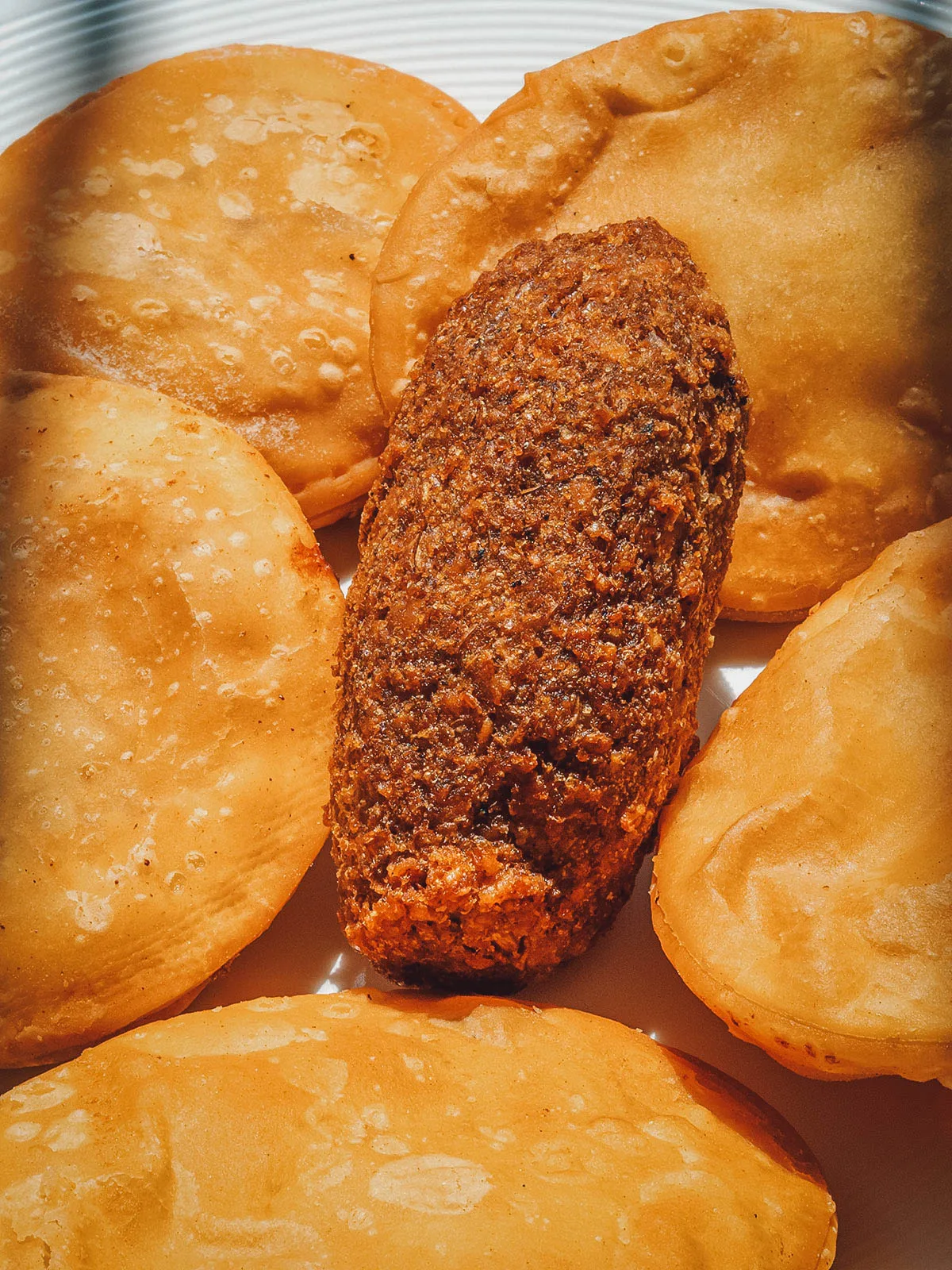
Photo by mariodmf
6. Ensalada Rusa
Ensalada rusa is Spanish for “Russian salad”. It’s a popular potato salad consumed in many parts of the world, including the Dominican Republic where it’s considered a staple Christmas dish.
Ensalada rusa exists in many variations but it’s core ingredients are potatoes, eggs, and mayonnaise. It can be made with any number of additional ingredients like carrots, corn, and green peas. Versions containing apples are most common at Christmas while versions made with beetroot are known for their bright pink color. Aside from the holidays, ensalada rusa is a mainstay at family banquets and other social gatherings in the Dominican Republic.
Russian salad has an interesting history. Also known as “Olivier salad”, it was invented by Chef Lucien Olivier, a Russian chef of Belgian and French descent who served the dish at his famous Hermitage restaurant in Moscow in the 1860s.
The recipe for the dressing was a well-guarded secret but it was believed to contain a type of mayonnaise made from French wine vinegar, mustard, and Provençal olive oil. It was also made with other ingredients that aren’t used in the versions of today like grouse, veal tongue, caviar, and crayfish tails.
RECIPE: Ensalada rusa
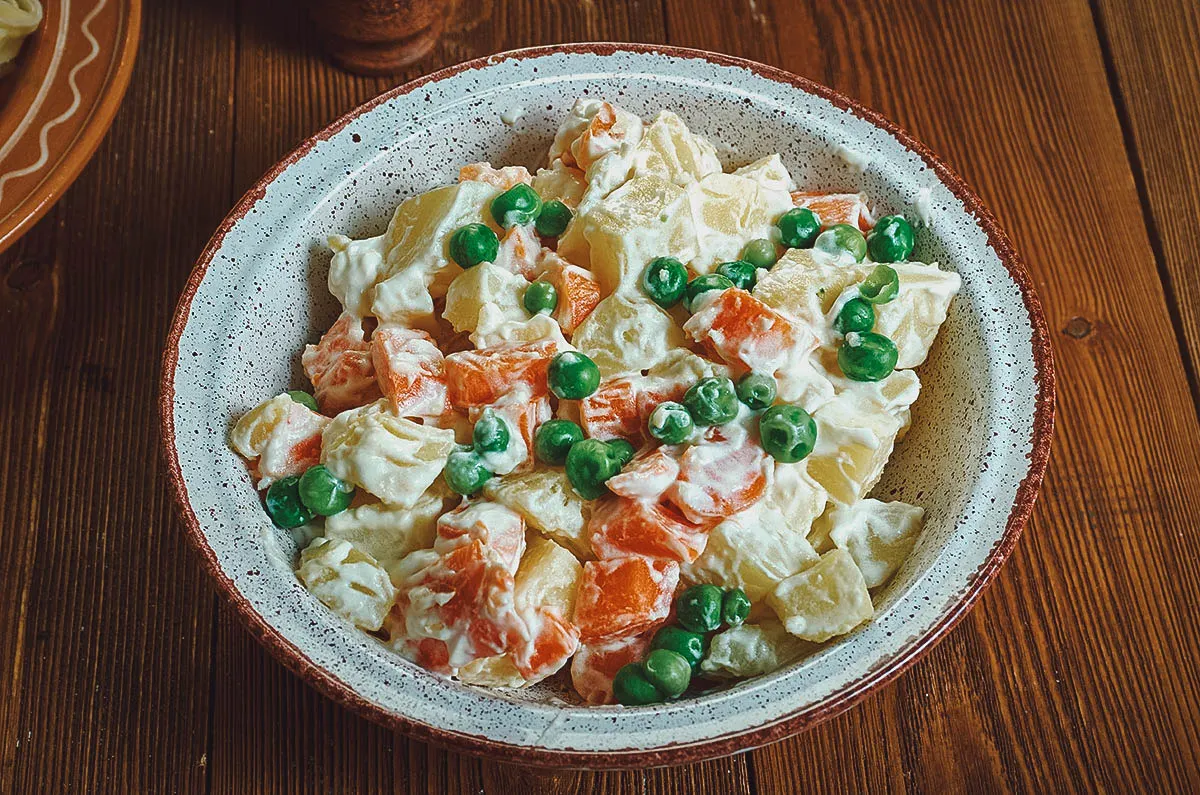
Photo by fanfon
7. Moro de Habichuelas
Moro refers to an ubiquitous Dominican dish of rice and beans. It’s popular throughout the Caribbean and Latin America where it exists in many variations. In Dominican cuisine, moro de habichuelas is the most common.
Dominican moro is typically made with kidney beans or pinto beans but it can be made with other types of beans as well like black beans, fava beans, or navy beans. It’s a staple Dominican dish that’s often paired with some type of meaty stew like carne molida.
RECIPE: Moro de habichuelas
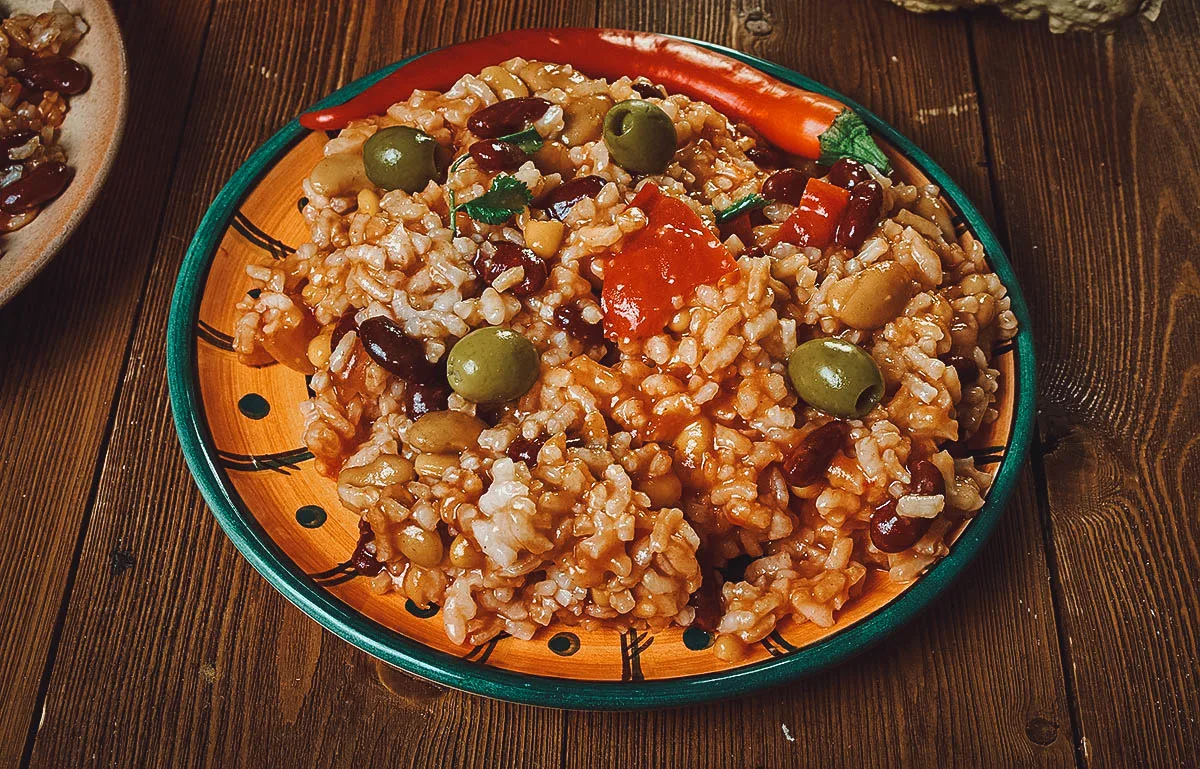
Photo by fanfon
8. Carne Molida
Carne molida is a ground meat dish popular in parts of the Caribbean, Latin America, and the Philippines. It’s known almost exclusively as carne molida in the Dominican Republic but it can be referred to as picadillo in other countries as well.
Preparations and ingredients for carne molida vary but it’s typically made with ground meat – usually beef – cooked with tomato paste, onions, green peppers, olives, and a host of herbs and spices. It’s a versatile dish that can be paired with arroz blanco (white rice) or used as a filling for empanadas, pastelitos, or kipes.
RECIPE: Carne molida
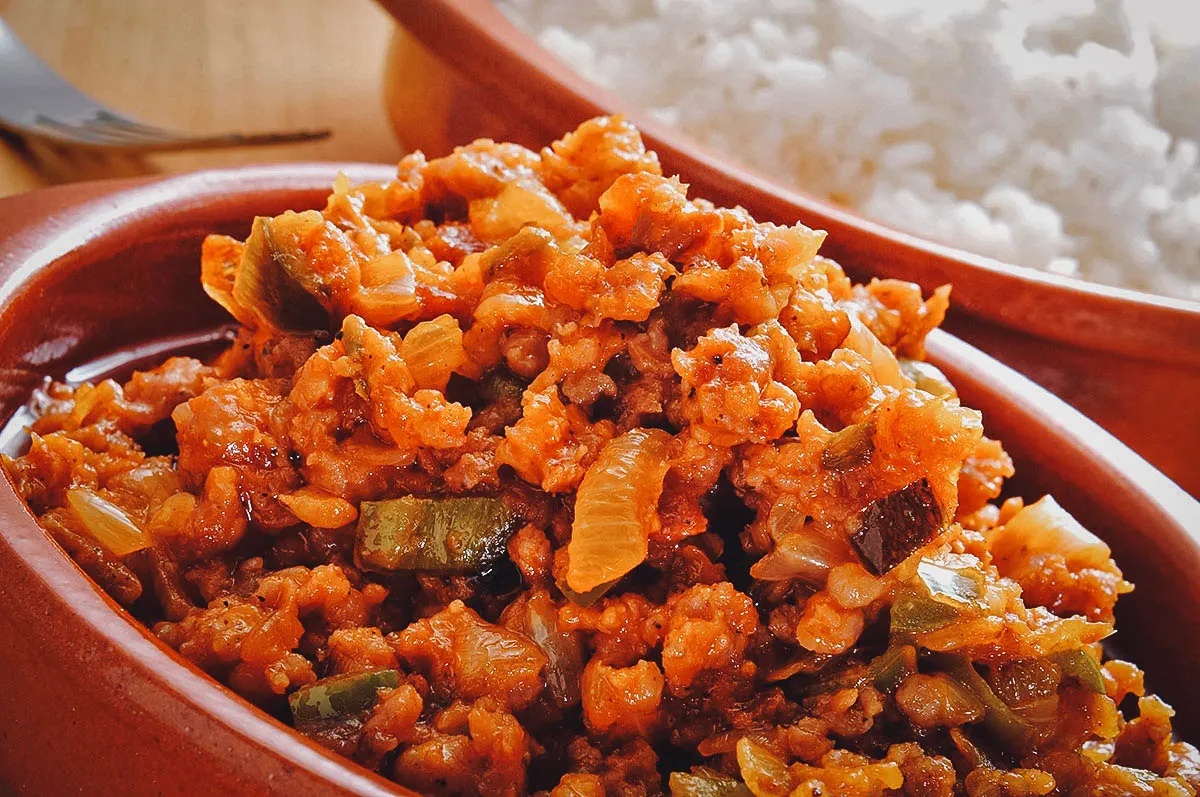
Photo by nito103
9. Pica Pollo
Pica pollo is Dominican fried chicken. It’s one of the most beloved comfort foods in the Dominican Republic and a frequent meal of choice after a night of drinking.
To prepare, chicken is marinated in lime juice and garlic before being coated in seasoned flour and deep-fried. It’s usually served with a side of tostones or french fries, lime juice, and a cold beverage like cola or beer.
RECIPE: Pica pollo
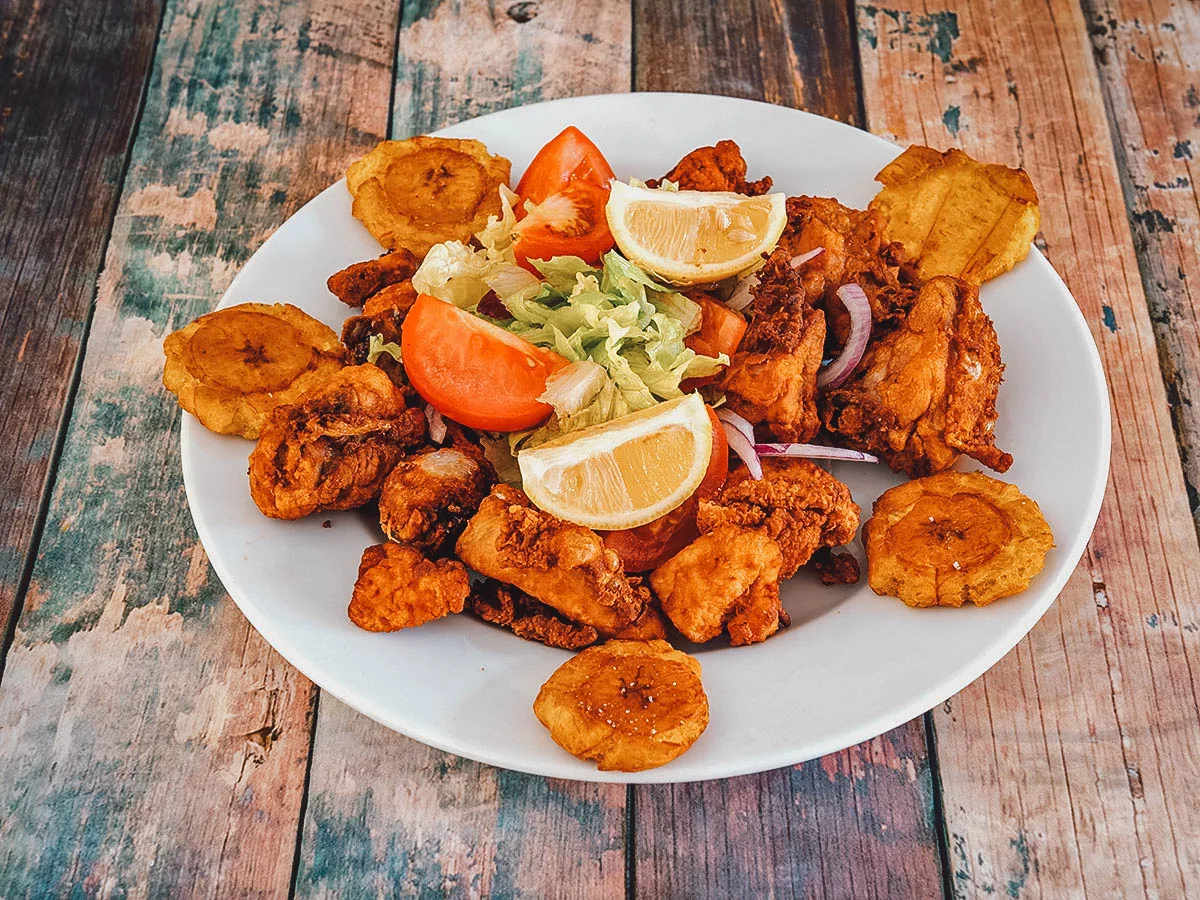
Photo by ToyaKis
10. Locrio
Locrio refers to a Dominican dish made with seasoned rice served with some type of animal protein like chicken, pork, shellfish, or Dominican salami. It’s similar to pilaf or paella and may in fact be an adaptation of Spain’s national dish.
Locrio gets its color from tomato sauce or annatto (bija). There are many types of locrio depending on the meat it’s served with. Some of the most common include locrio de pica-pica (spicy sardines), locrio de camarones (shrimp), locrio de arenque (smoked herring), and locrio de salami (Dominican salami). In general, Dominican rice dishes made with meat or seafood are called locrio while rice dishes made with beans are classified as moro.
The most popular type of locrio is locrio de pollo (chicken). It’s strictly a Dominican dish but a similar chicken and rice dish called arroz con pollo is popular throughout the Caribbean and Latin America.
RECIPE: Locrio de pollo
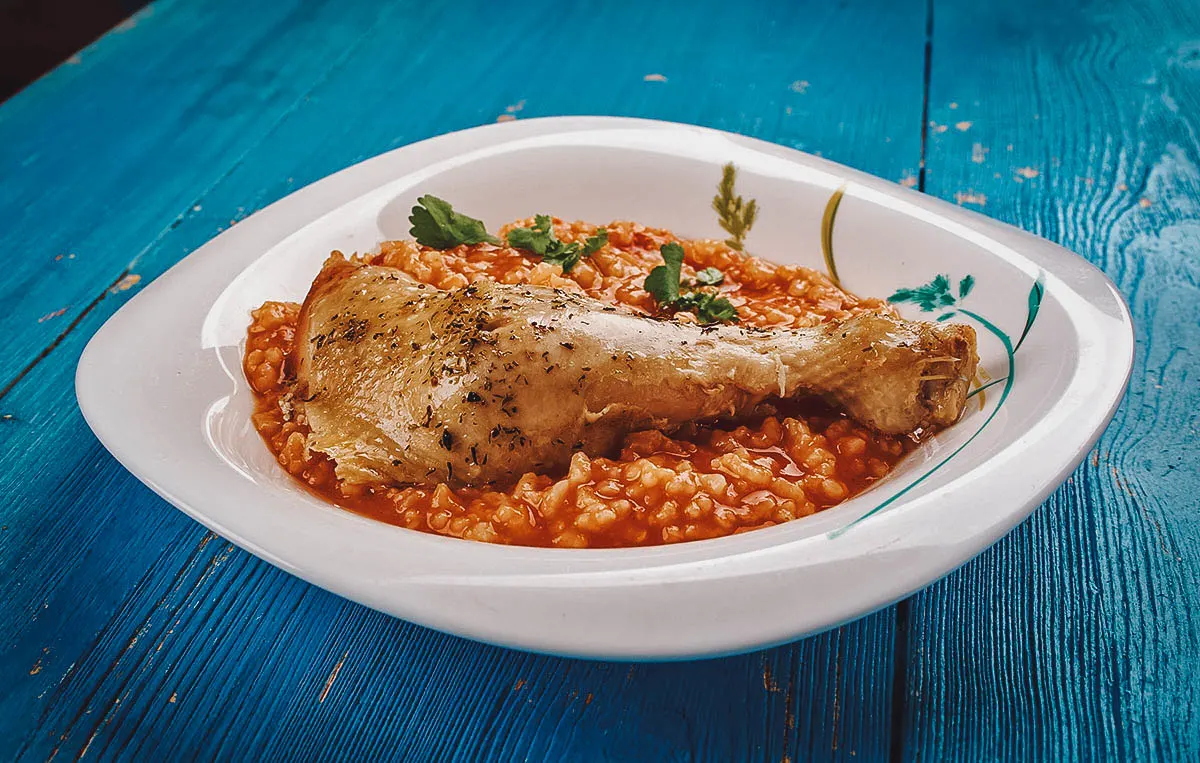
Photo by fanfon
11. La Bandera Dominicana
La Bandera Dominicana, or “la bandera” for short, is the national dish of the Dominican Republic. It literally means “The Dominican Flag” and refers to a lunchtime dish of white rice, beans, and some type of meat.
La bandera gets its name from the colors of the Dominican flag. The white is represented by the rice while the red is represented by the beans, usually red kidney beans, cranberry, or pinto beans. Black beans, white beans, or pigeon peas (guandules) may be used as well.
Nothing on the plate is ever blue but it’s represented symbolically by the meat. Chicken like pollo guisado and beef are the most common but pork or fish may be used as well. Apart from these three main components, it’s often served with salad and side dishes like tostones, fritos maduros, or avocado.
La bandera is considered the national lunchtime dish of the Dominican Republic and can also be referred to as la comida, el almuerzo, or el plato del día. Similar lunchtime dishes are popular throughout Latin America like pabellón criollo in Venezuela, comida corrida in Mexico, and corrientazo in Colombia.
RECIPE: La Bandera Dominicana
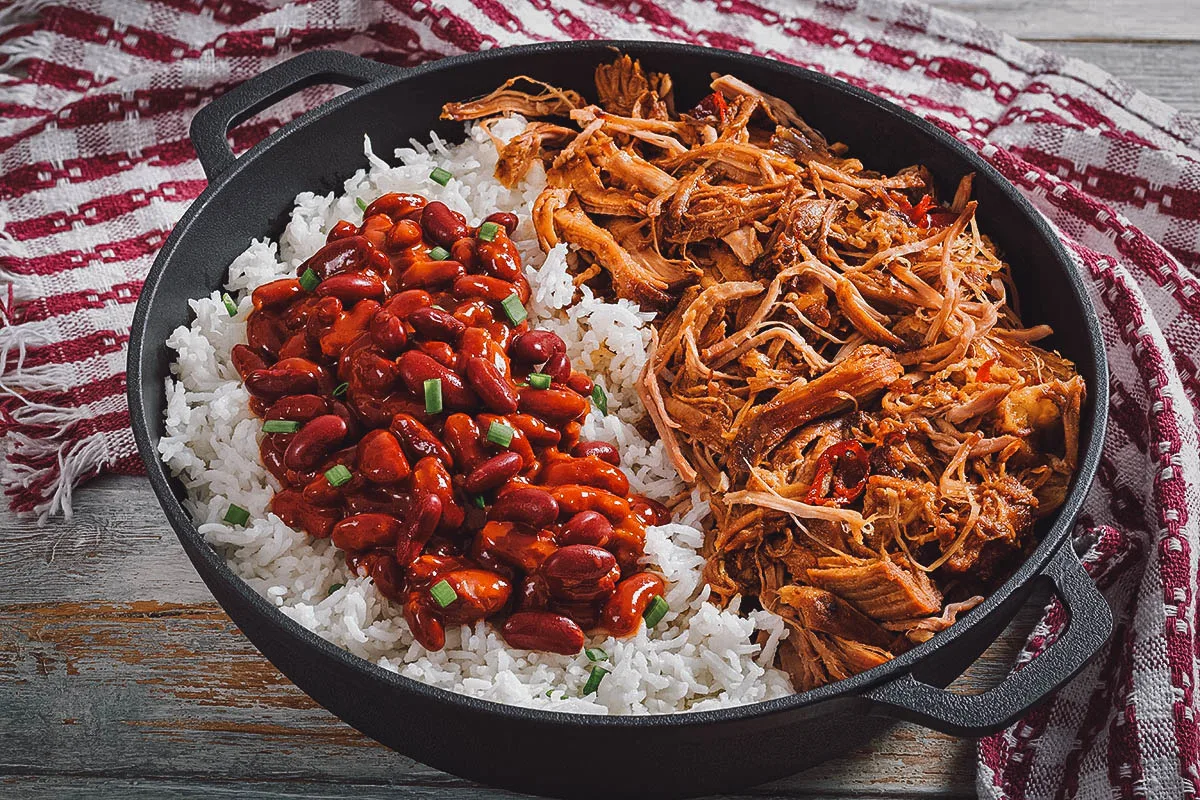
Photo by myviewpoint
12. Pastelón de Platano Maduro
Pastelón refers to a Dominican casserole made with ripe plantains, beef, tomato sauce, and cheese. The ingredients are layered like an Italian lasagna or Greek moussaka but instead of pasta or eggplant, it’s made with plantains. It’s arguably the second most popular dish made with plantains in the Dominican Republic, after mangú.
RECIPE: Pastelon de platano maduro
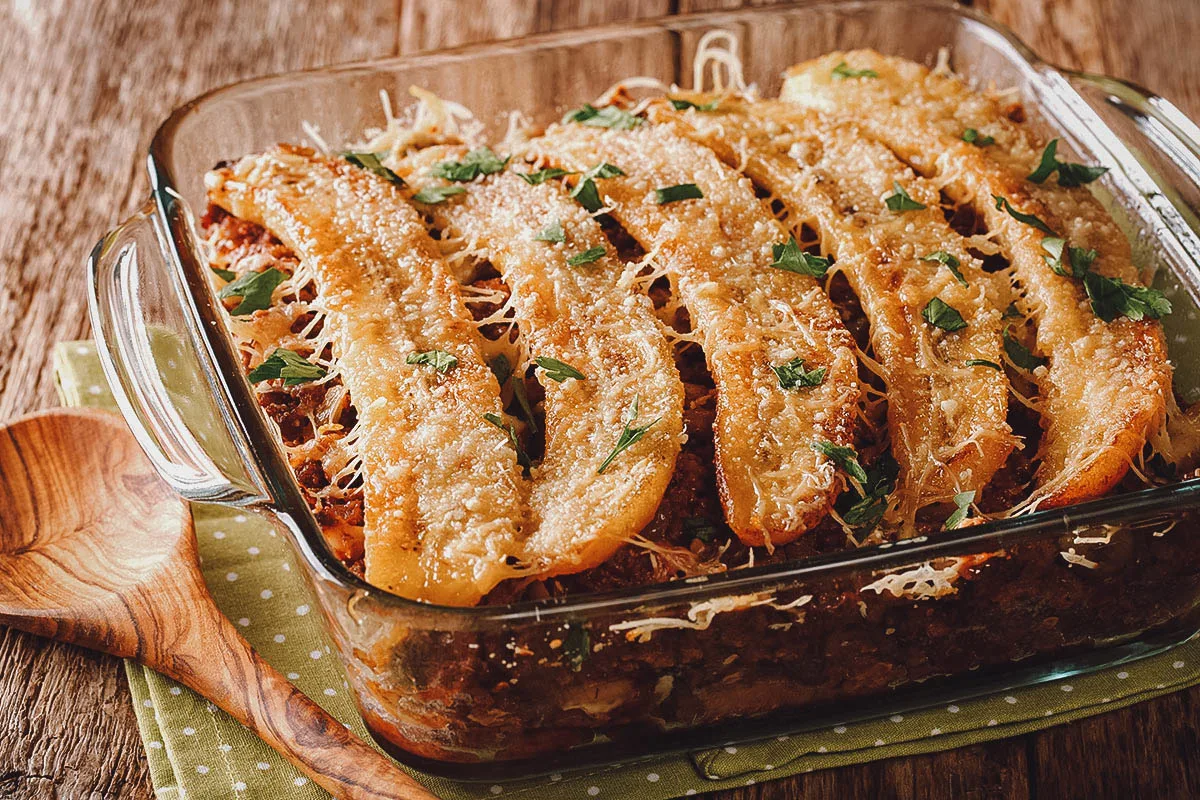
Photo by lenyvavsha
13. Sancocho
Sancocho refers to a Dominican stew made with meat and root vegetables. It’s popular throughout Latin America where it exists in many variations and sometimes goes by different names. In the Dominican Republic, it’s considered by many to be a national dish.
Dominican recipes for sancocho vary from cook to cook but they’re typically made with beef flank (or a similarly inexpensive cut), chicken, or gallina vieja (old hen). Different types of root vegetables can be added though as a general rule, potatoes, noodles, or tomato sauce are never used. Sancocho takes a long time to prepare so it’s a dish usually reserved for special occasions.
Notable versions of Dominican sancocho include sancocho prieto – a type of slow-cooked sancocho that turns a darker brown in color – and sancocho de siete carnes, a version made with seven cuts of meat from four different animals (beef, pork, chicken, goat).
RECIPE: Dominican sancocho
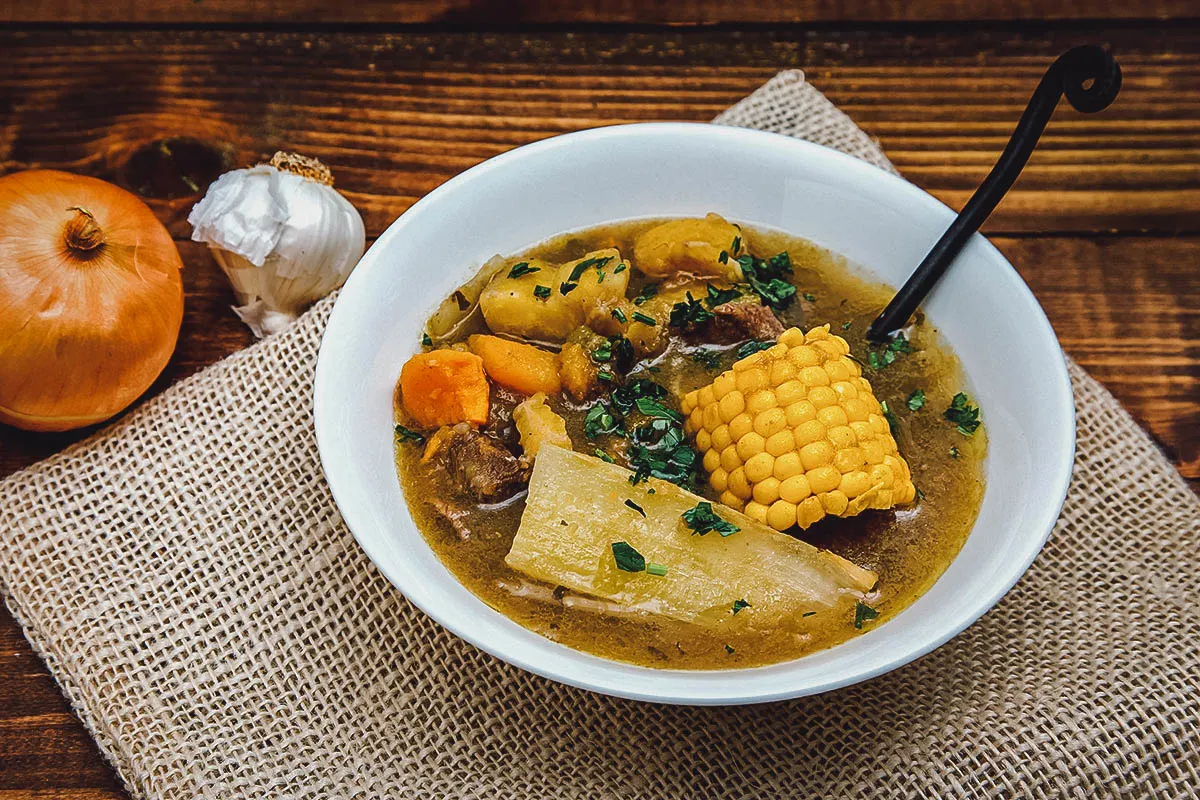
Photo by miromiro
14. Carne Guisada
Carne guisada refers to Dominican-style braised beef. It often forms the meat component of la bandera and consists of slow-cooked beef prepared with vegetables and tomato sauce.
Carne guisada is usually made with inexpensive cuts of beef, like round or skirt. It’s slow-cooked over a low flame till caramelized and very tender.
RECIPE: Carne guisada
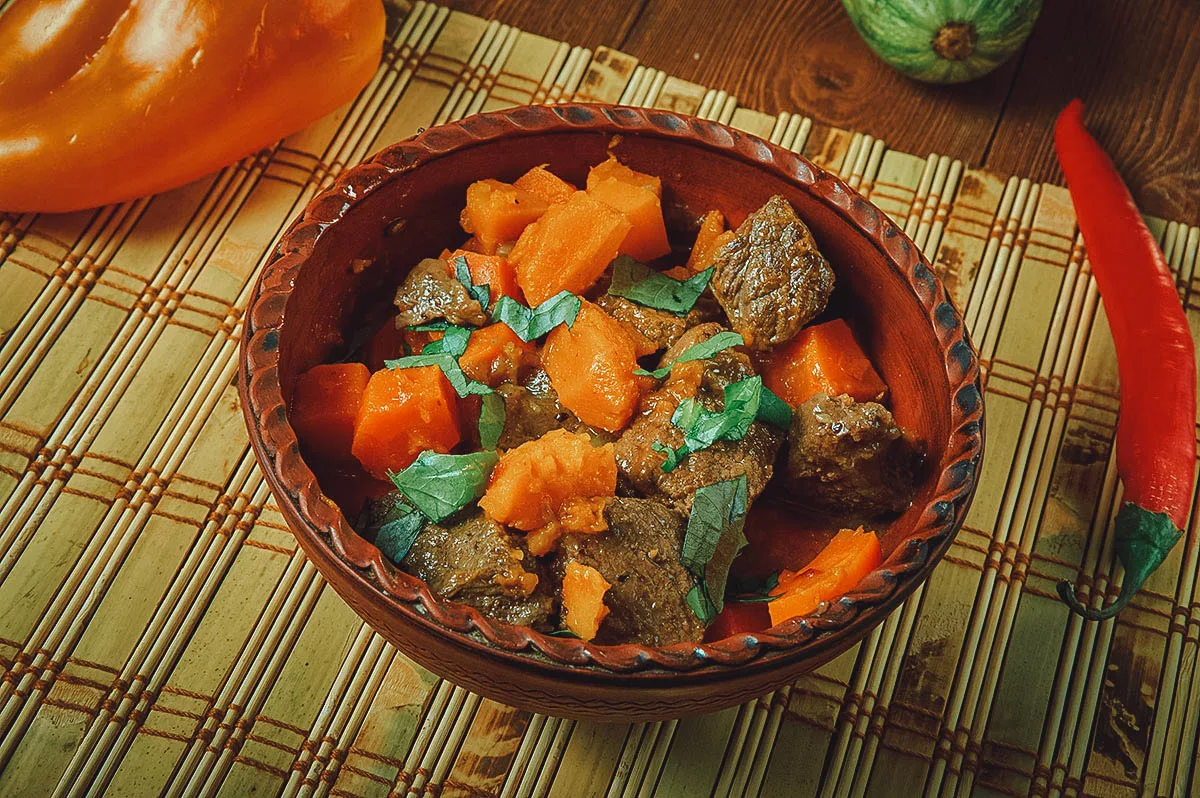
Photo by fanfon
15. Chivo Guisado Liniero
Chivo guisado liniero (or chivo guisado picante) refers to a spicy goat meat stew. Goat dishes are common in the western regions of the Dominican Republic, specifically in the northwest and southwest. This particular dish hails from the northwest region where it’s made with goats that feed on wild oregano. Grazing on wild oregano is said to infuse the meat with the flavors of the herb.
Aside from local goat meat, another essential component to chivo guisado is the scotch bonnet pepper. It’s what gives the dish its characteristic spiciness and flavor. Chivo guisado liniero is usually served with tostones, arroz blanco (white rice), or moro de habichuelas.
RECIPE: Chivo guisado liniero
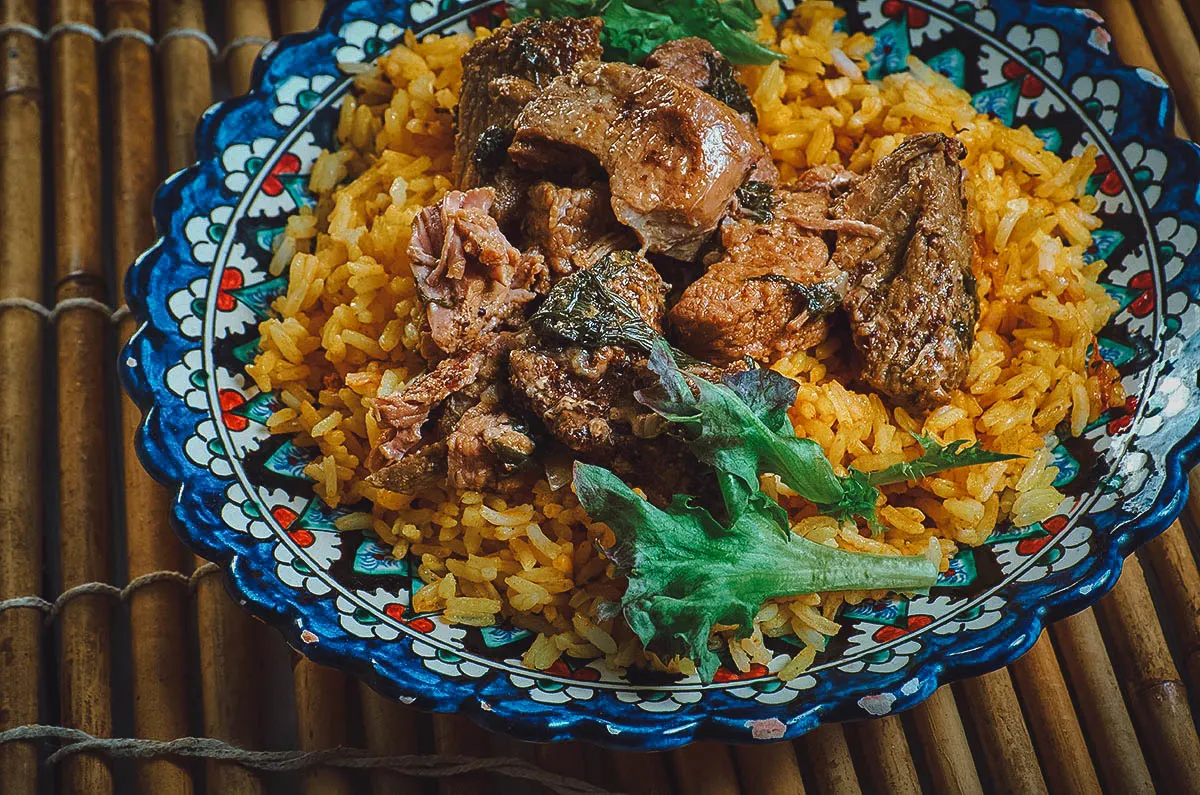
Photo by fanfon
FINAL THOUGHTS ON DOMINICAN CUISINE
There are many reasons why millions of people visit the Dominican Republic every year. Sand and surf top most people’s lists but not far behind is the food.
If you’re wondering where to get your next dose of vitamin sea, then we hope this Dominican food guide gives you fifteen compelling reasons to add this tasty island nation to your shortlist.
Disclosure
Some of the links in this Dominican food guide are affiliate links. We’ll earn a small commission if you make a booking or reservation at no added cost to you. We only recommend products and services that we use ourselves and firmly believe in. We really appreciate your support as it helps us make more of these free travel and food guides. Gracias!
Cover photo by fanfon. Stock images via Depositphotos.

